
LOADING ...
In response to evolving domestic opinion, eMedals Inc has made the conscious decision to remove the presentation of German Third Reich historical artifacts from our online catalogue. For three decades, eMedals Inc has made an effort to preserve history in all its forms. As historians and researchers, we have managed sensitive articles and materials with the greatest of care and respect for their past and present social context. We acknowledge the growing sentiments put forth by the Canadian public and have taken proactive actions to address this opinion.
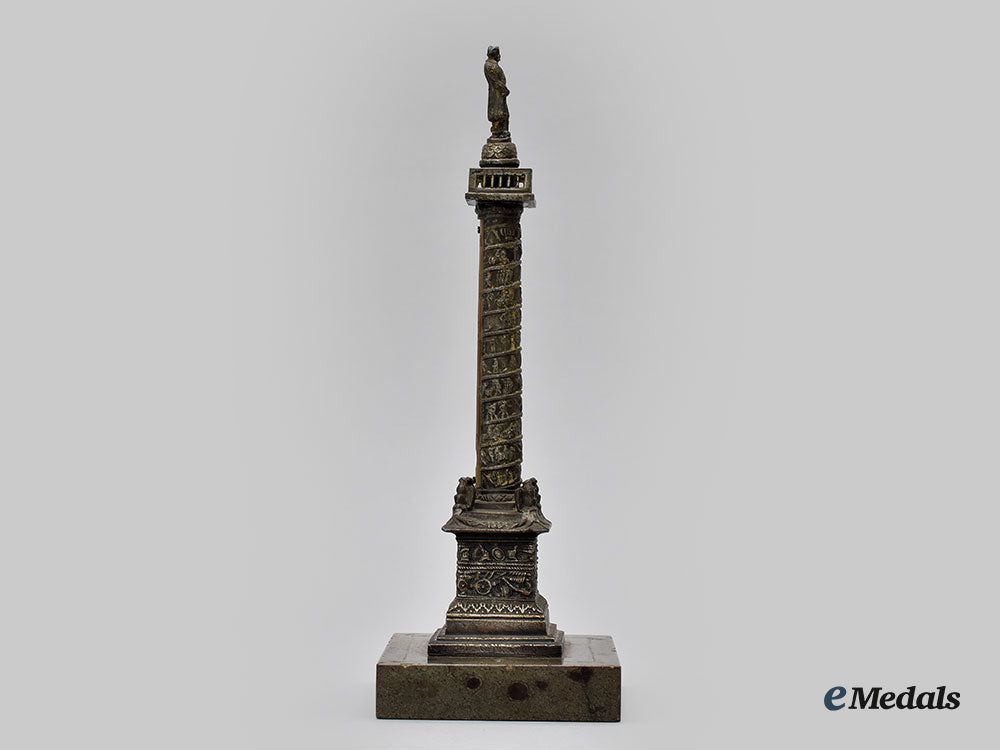
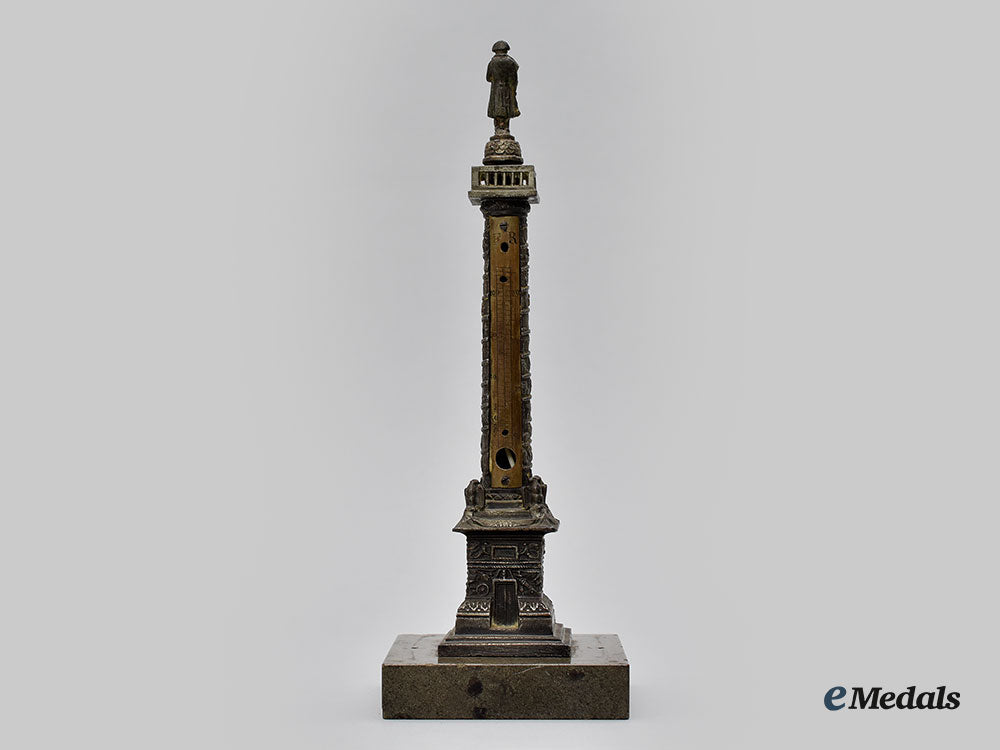
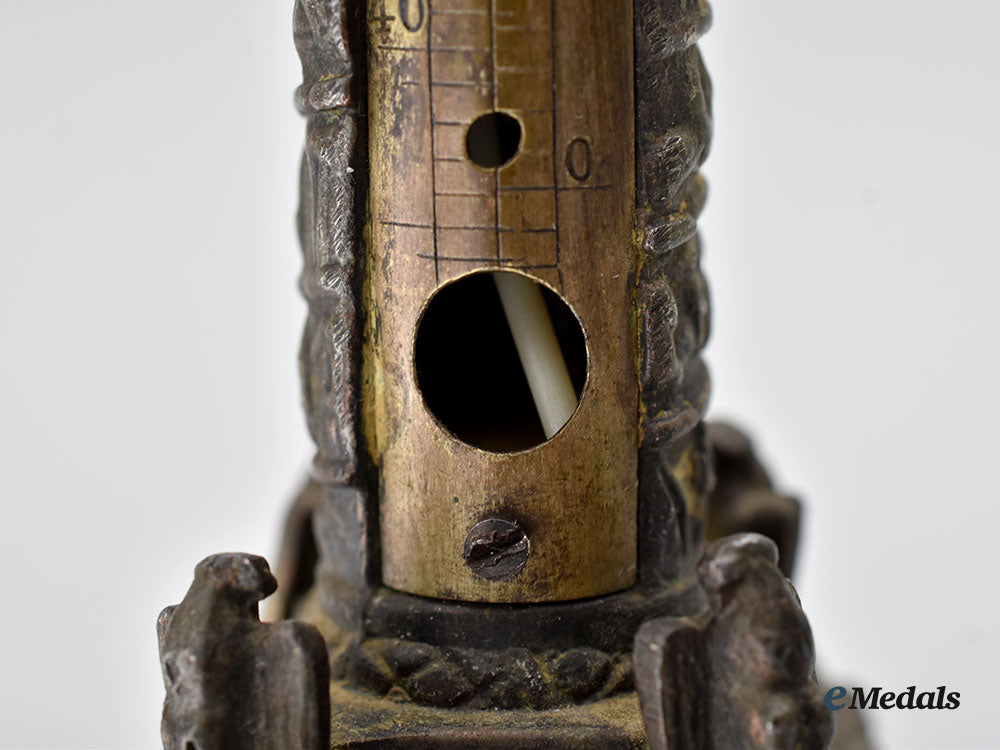
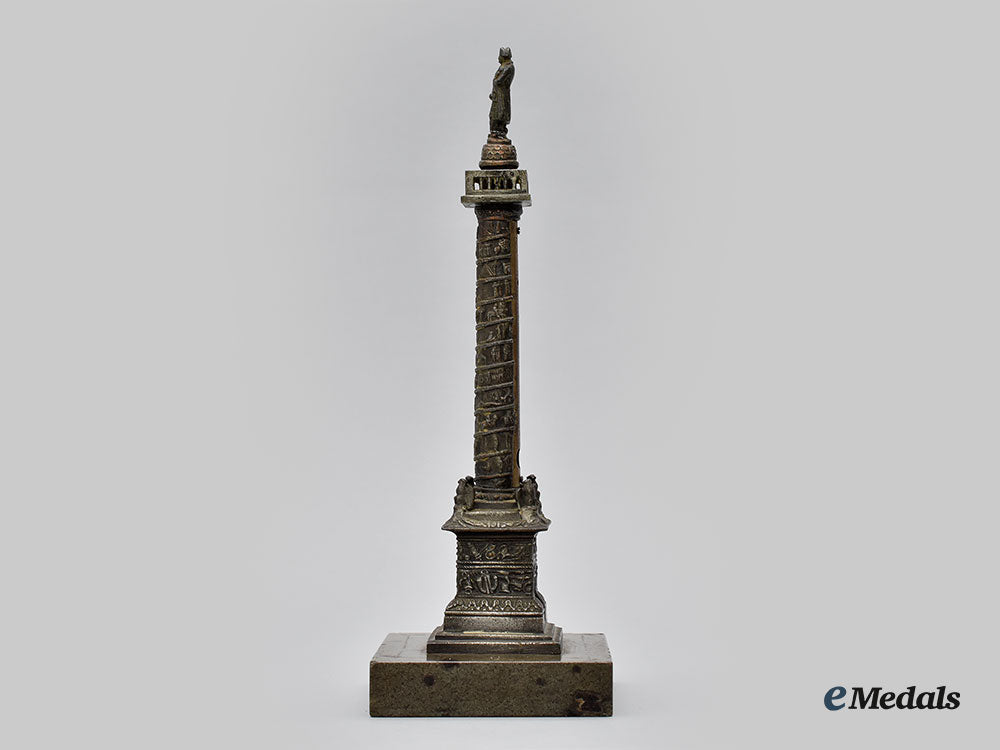

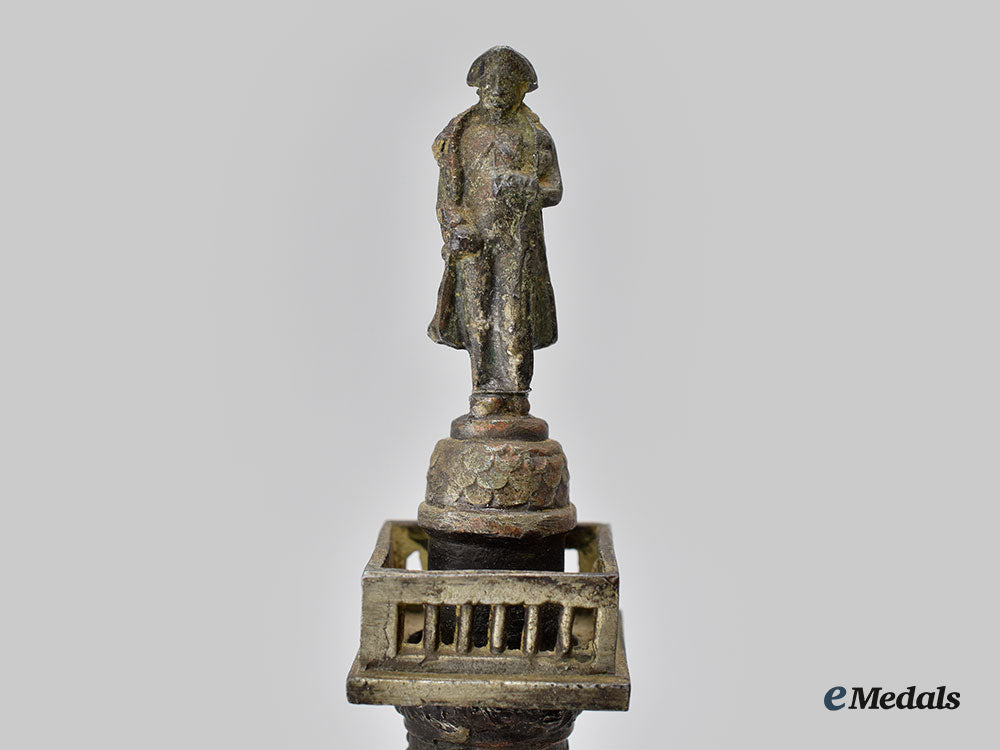

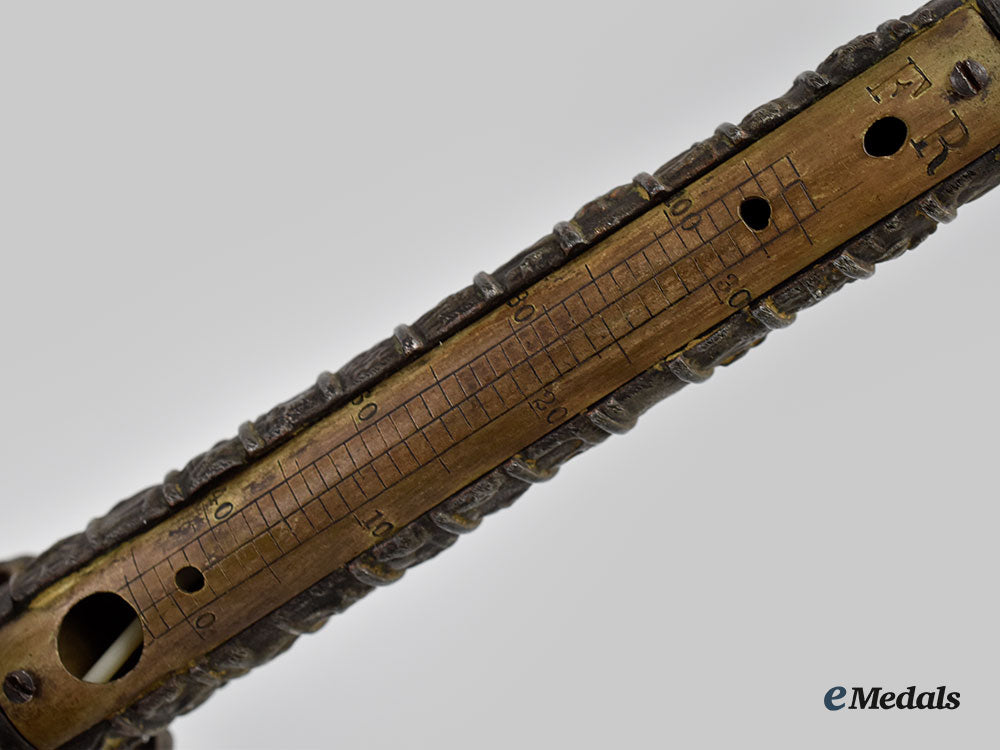
France, I Empire. A Napoleon Standing Vendôme Column Statuette
France, I Empire. A Napoleon Standing Vendôme Column Statuette
SKU: ITEM: EU21329
0% Buyer's Premium
Current Bid:
Your Max Bid:
Bid History:
Time Remaining:
Couldn't load pickup availability
Shipping Details
Shipping Details
eMedals offers rapid domestic and international shipping. Orders received prior to 12:00pm (EST) will be shipped on the same business day.* Orders placed on Canadian Federal holidays will be dispatched the subsequent business day. Courier tracking numbers are provided for all shipments. All items purchased from eMedals can be returned for a full monetary refund or merchandise credit, providing the criteria presented in our Terms & Conditions are met. *Please note that the addition of a COA may impact dispatch time.
Shipping Details
eMedals offers rapid domestic and international shipping. Orders received prior to 12:00pm (EST) will be shipped on the same business day.* Orders placed on Canadian Federal holidays will be dispatched the subsequent business day. Courier tracking numbers are provided for all shipments. All items purchased from eMedals can be returned for a full monetary refund or merchandise credit, providing the criteria presented in our Terms & Conditions are met. *Please note that the addition of a COA may impact dispatch time.
Description
Description
In silvered bronze, multi-piece construction, nicely detailed, illustrating Napoleon Bonaparte in a standing position, his right arm resting at his side, his left arm bent with his hand placed upon his chest, his hat worn in the traditional "en bataille" style (that is, with the corns parallel to the shoulders, while most of his officers wore their hats "en colonne", that is, perpendicular to the shoulders), his feet resting upon the scalloped dome of the column, the walk-out area around the base of the dome framed within a square platform and fenced, the column bearing its spiralling bas-relief bronze plates on three sides, the reverse of the column with an inserted bronze plate that originally had a thermometer in place but has been lost to time, the plate marked with gradations in tens rising from 40 to 100 Fahrenheit on the left side and from 0 to 30 Celsius on the right side, with "F R" (Française République) at the top, the base of the column stepped with French First Empire eagles in all four corners, the pedestal supporting the statuette emblazoned with a series of battle designs and icons on all four sides, the rear of the pedestal with a doorway that was designed as the entrance to the inner staircase of the column, the pedestal with a stepped base, the statuette mounted to a greenish-black marble base, a nut and screw combination visible on the underside of the base that secures the body of the statuette in place, measuring 94.2 mm in width x 93.7 mm in depth x 268 mm in height, exhibiting light surface wear, along with silvering wear overall, a nick on the front edge and spotting present on the marble base, better than very fine.
Footnote: The original Vendôme column was started in 1806 at Napoleon's direction and completed in 1810. It was modelled after Trajan's Column, to celebrate the victory of Austerlitz; its veneer of 425 spiralling bas-relief bronze plates was made out of cannon taken from the combined armies of Europe, according to his propaganda (the usual figure given is hugely exaggerated: 180 cannon were actually captured at Austerlitz). These plates were designed by the sculptor Pierre-Nolasque Bergeret and executed by a team of about 30 sculptors including Jean-Joseph Foucou, Louis-Simon Boizot, François Joseph Bosio, Lorenzo Bartolini, Claude Ramey, François Rude, Corbet, Clodion, Julie Charpentier, and Henri-Joseph Ruxthiel.
A statue of Napoleon by Antoine-Denis Chaudet was placed on top of the column. Napoleon is depicted dressed in Roman attire, bare-headed, crowned with laurels, holding a sword in his right hand and a globe surmounted with a statue of Victory (as in Napoleon as Mars the Peacemaker) in his left hand. In 1816, taking advantage of the Allied occupying force, a mob of men and horses had attached a cable to the neck of the statue of Napoleon atop the column, but it had refused to budge – one woman quipped: "If the Emperor is as solid on his throne as this statue is on its column, he's nowhere near descending the throne". After the Bourbon Restoration the statue, though not the column, was pulled down and melted down to provide the bronze for the recast equestrian statue of Henry IV on the Pont Neuf (as was bronze from sculptures on the Column of the Grande Armée at Boulogne-sur-Mer), though the statuette of Victory is still to be seen in the salon Napoléon of the Hôtel des Monnaies (which also contains a model of the column and a likeness of Napoleon's face copied from his death mask).
A replacement statue of Napoléon in modern dress (a bicorn hat, boots and a redingote), however, was erected by Louis-Philippe, and a better, more augustly classicizing one by Louis-Napoléon (later Napoléon III). Regardless of the political assessment of Karl Marx's theory, one thing is certain: he predicted the collapse of the Vendome column long before it happened. This prediction was given by him in the political pamphlet "Le 18 Brumaire de Louis Bonaparte of 1852". This pamphlet, sharply critical of the political figure of Napoleon III, ends with the words: "But if the Imperial mantle finally falls on the shoulders of Louis Bonaparte, the bronze statue of Napoleon will fall from the height of the Vendome column". During the events in the run-up to the founding of the Commune, March 22, 1871, saw disturbances outside the National Guard when demonstrators holding banners declaring them to be "Friends of Peace" were blocked from entering the Place Vendome by guardsmen who, after being fired on, opened fire on the crowd. At least 12 people were killed and many wounded.
During the Paris Commune in 1871, the painter Gustave Courbet, president of the Federation of Artists and elected member of the Commune, who had previously expressed his dismay that this monument to war was located on the Rue de la Paix, proposed that the column be disassembled and preserved at the Hôtel des Invalides. Courbet argued that: "In as much as the Vendôme column is a monument devoid of all artistic value, tending to perpetuate by its expression the ideas of war and conquest of the past imperial dynasty, which are reproved by a republican nation's sentiment, citizen Courbet expresses the wish that the National Defense government will authorize him to disassemble this column."
His project as proposed was not adopted, though on April 12th, legislation was passed authorizing the dismantling of the imperial symbol. When the column was taken down on May 16th, its bronze plates were preserved. After employing a series of ropes and quarry workers, observers saw that the statue "fell over on the heap of sand prepared for it, with a mighty crash. There was no concussion on the ground, the column broke up almost before it reached its bed, and lay on the ground, a huge mass of ruin. An immense dust and smoke from the stones and crumpled clay rose up and an instant after a crowd of men, National Guards, Communards, and a sight-seeing Englishman flew upon it, and commenced to get bits of it as remembrance, but the excitement was so intense that people moved about as in a dream.
Immediately following the destruction of the column and in repudiation of its perceived glorification of national chauvinism and bellicosity, the Place Vendôme was renamed Place Internationale in celebration of the Communards' promotion of international fraternity. After the suppression of the Paris Commune by Adolphe Thiers, the decision was made to rebuild the column with the statue of Napoléon restored at its apex. For his role in the Commune, Courbet was condemned to pay the costs of rebuilding the monument, estimated at 323,000 francs, in yearly installments of 10,000 francs. Unable to pay, Courbet went into self-imposed exile in Switzerland, the French government seized and sold the artist's paintings for a minor amount, and Courbet died in exile in December 1877. Meanwhile, in 1874, the column was re-erected at the center of Place Vendôme with a copy of the original statue on top. An inner staircase leading to the top is no longer open to the public.
Description
In silvered bronze, multi-piece construction, nicely detailed, illustrating Napoleon Bonaparte in a standing position, his right arm resting at his side, his left arm bent with his hand placed upon his chest, his hat worn in the traditional "en bataille" style (that is, with the corns parallel to the shoulders, while most of his officers wore their hats "en colonne", that is, perpendicular to the shoulders), his feet resting upon the scalloped dome of the column, the walk-out area around the base of the dome framed within a square platform and fenced, the column bearing its spiralling bas-relief bronze plates on three sides, the reverse of the column with an inserted bronze plate that originally had a thermometer in place but has been lost to time, the plate marked with gradations in tens rising from 40 to 100 Fahrenheit on the left side and from 0 to 30 Celsius on the right side, with "F R" (Française République) at the top, the base of the column stepped with French First Empire eagles in all four corners, the pedestal supporting the statuette emblazoned with a series of battle designs and icons on all four sides, the rear of the pedestal with a doorway that was designed as the entrance to the inner staircase of the column, the pedestal with a stepped base, the statuette mounted to a greenish-black marble base, a nut and screw combination visible on the underside of the base that secures the body of the statuette in place, measuring 94.2 mm in width x 93.7 mm in depth x 268 mm in height, exhibiting light surface wear, along with silvering wear overall, a nick on the front edge and spotting present on the marble base, better than very fine.
Footnote: The original Vendôme column was started in 1806 at Napoleon's direction and completed in 1810. It was modelled after Trajan's Column, to celebrate the victory of Austerlitz; its veneer of 425 spiralling bas-relief bronze plates was made out of cannon taken from the combined armies of Europe, according to his propaganda (the usual figure given is hugely exaggerated: 180 cannon were actually captured at Austerlitz). These plates were designed by the sculptor Pierre-Nolasque Bergeret and executed by a team of about 30 sculptors including Jean-Joseph Foucou, Louis-Simon Boizot, François Joseph Bosio, Lorenzo Bartolini, Claude Ramey, François Rude, Corbet, Clodion, Julie Charpentier, and Henri-Joseph Ruxthiel.
A statue of Napoleon by Antoine-Denis Chaudet was placed on top of the column. Napoleon is depicted dressed in Roman attire, bare-headed, crowned with laurels, holding a sword in his right hand and a globe surmounted with a statue of Victory (as in Napoleon as Mars the Peacemaker) in his left hand. In 1816, taking advantage of the Allied occupying force, a mob of men and horses had attached a cable to the neck of the statue of Napoleon atop the column, but it had refused to budge – one woman quipped: "If the Emperor is as solid on his throne as this statue is on its column, he's nowhere near descending the throne". After the Bourbon Restoration the statue, though not the column, was pulled down and melted down to provide the bronze for the recast equestrian statue of Henry IV on the Pont Neuf (as was bronze from sculptures on the Column of the Grande Armée at Boulogne-sur-Mer), though the statuette of Victory is still to be seen in the salon Napoléon of the Hôtel des Monnaies (which also contains a model of the column and a likeness of Napoleon's face copied from his death mask).
A replacement statue of Napoléon in modern dress (a bicorn hat, boots and a redingote), however, was erected by Louis-Philippe, and a better, more augustly classicizing one by Louis-Napoléon (later Napoléon III). Regardless of the political assessment of Karl Marx's theory, one thing is certain: he predicted the collapse of the Vendome column long before it happened. This prediction was given by him in the political pamphlet "Le 18 Brumaire de Louis Bonaparte of 1852". This pamphlet, sharply critical of the political figure of Napoleon III, ends with the words: "But if the Imperial mantle finally falls on the shoulders of Louis Bonaparte, the bronze statue of Napoleon will fall from the height of the Vendome column". During the events in the run-up to the founding of the Commune, March 22, 1871, saw disturbances outside the National Guard when demonstrators holding banners declaring them to be "Friends of Peace" were blocked from entering the Place Vendome by guardsmen who, after being fired on, opened fire on the crowd. At least 12 people were killed and many wounded.
During the Paris Commune in 1871, the painter Gustave Courbet, president of the Federation of Artists and elected member of the Commune, who had previously expressed his dismay that this monument to war was located on the Rue de la Paix, proposed that the column be disassembled and preserved at the Hôtel des Invalides. Courbet argued that: "In as much as the Vendôme column is a monument devoid of all artistic value, tending to perpetuate by its expression the ideas of war and conquest of the past imperial dynasty, which are reproved by a republican nation's sentiment, citizen Courbet expresses the wish that the National Defense government will authorize him to disassemble this column."
His project as proposed was not adopted, though on April 12th, legislation was passed authorizing the dismantling of the imperial symbol. When the column was taken down on May 16th, its bronze plates were preserved. After employing a series of ropes and quarry workers, observers saw that the statue "fell over on the heap of sand prepared for it, with a mighty crash. There was no concussion on the ground, the column broke up almost before it reached its bed, and lay on the ground, a huge mass of ruin. An immense dust and smoke from the stones and crumpled clay rose up and an instant after a crowd of men, National Guards, Communards, and a sight-seeing Englishman flew upon it, and commenced to get bits of it as remembrance, but the excitement was so intense that people moved about as in a dream.
Immediately following the destruction of the column and in repudiation of its perceived glorification of national chauvinism and bellicosity, the Place Vendôme was renamed Place Internationale in celebration of the Communards' promotion of international fraternity. After the suppression of the Paris Commune by Adolphe Thiers, the decision was made to rebuild the column with the statue of Napoléon restored at its apex. For his role in the Commune, Courbet was condemned to pay the costs of rebuilding the monument, estimated at 323,000 francs, in yearly installments of 10,000 francs. Unable to pay, Courbet went into self-imposed exile in Switzerland, the French government seized and sold the artist's paintings for a minor amount, and Courbet died in exile in December 1877. Meanwhile, in 1874, the column was re-erected at the center of Place Vendôme with a copy of the original statue on top. An inner staircase leading to the top is no longer open to the public.







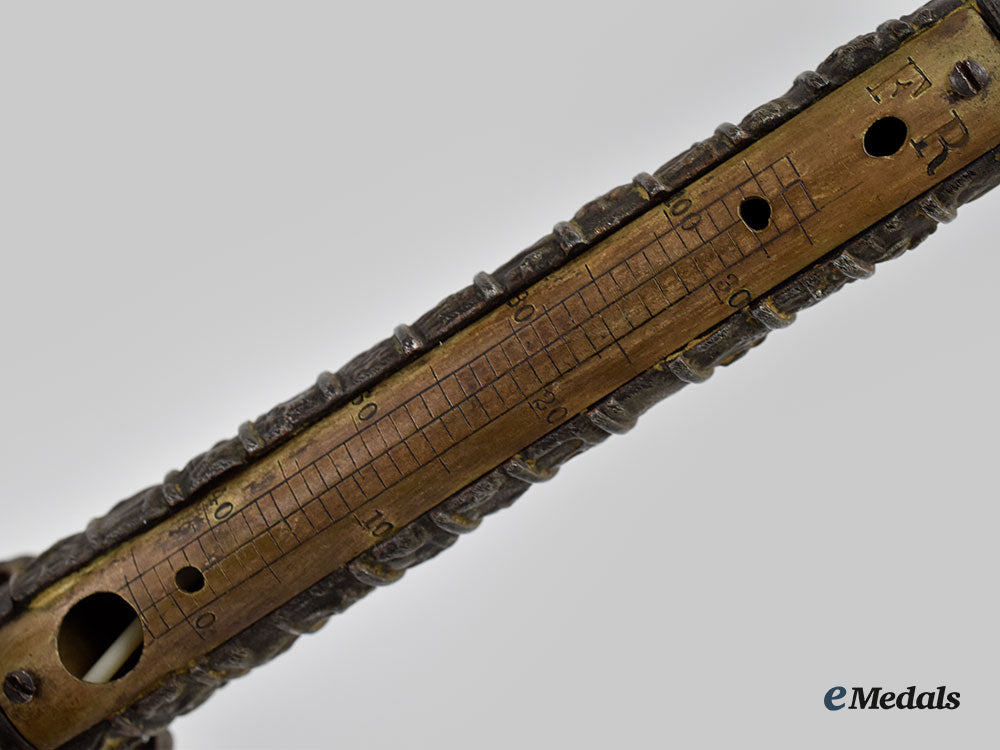
You May Also Like
Japan, Empire. A T90 Civil Defense Helmet, c.1943
W8287
Canada, Commonwealth; United Kingdom. A Mixed Lot of St. John Ambulance Association Medals and Uniform Insignia
M0231-134
Canada, Commonwealth. A Pair of St. John Ambulance Medals to Charles E. Jefkins, Hamilton, Ontario Superintendent
M0231-128
Canada, Commonwealth. A Lot of Awards, Documents, and Photographs to Peter Mori, St. John Ambulance Corps Superintendent for Hamilton, Ontario
M0231-122
Canada, CEF. A Large Oval Photo
C7175
-
Japan, Empire. A T90 Civil Defense Helmet, c.1943
W8287
Add to CartRegular price $275 USDRegular price $0 USD Sale price $275 USDUnit price / per -
Canada, Commonwealth; United Kingdom. A Mixed Lot of St. John Ambulance Association Medals and Uniform Insignia
M0231-134
Add to CartRegular price $135 USDRegular price $0 USD Sale price $135 USDUnit price / per -
Canada, Commonwealth. A Pair of St. John Ambulance Medals to Charles E. Jefkins, Hamilton, Ontario Superintendent
M0231-128
Add to CartRegular price $100 USDRegular price $0 USD Sale price $100 USDUnit price / per -
Canada, Commonwealth. A Lot of Awards, Documents, and Photographs to Peter Mori, St. John Ambulance Corps Superintendent for Hamilton, Ontario
M0231-122
Add to CartRegular price $225 USDRegular price $0 USD Sale price $225 USDUnit price / per -
Canada, CEF. A Large Oval Photo
C7175
Add to CartRegular price $120 USDRegular price $0 USD Sale price $120 USDUnit price / per
Do you have a similar item you are interested in selling?
Please complete the form and our client care representatives will contact you.
Sell Item




















